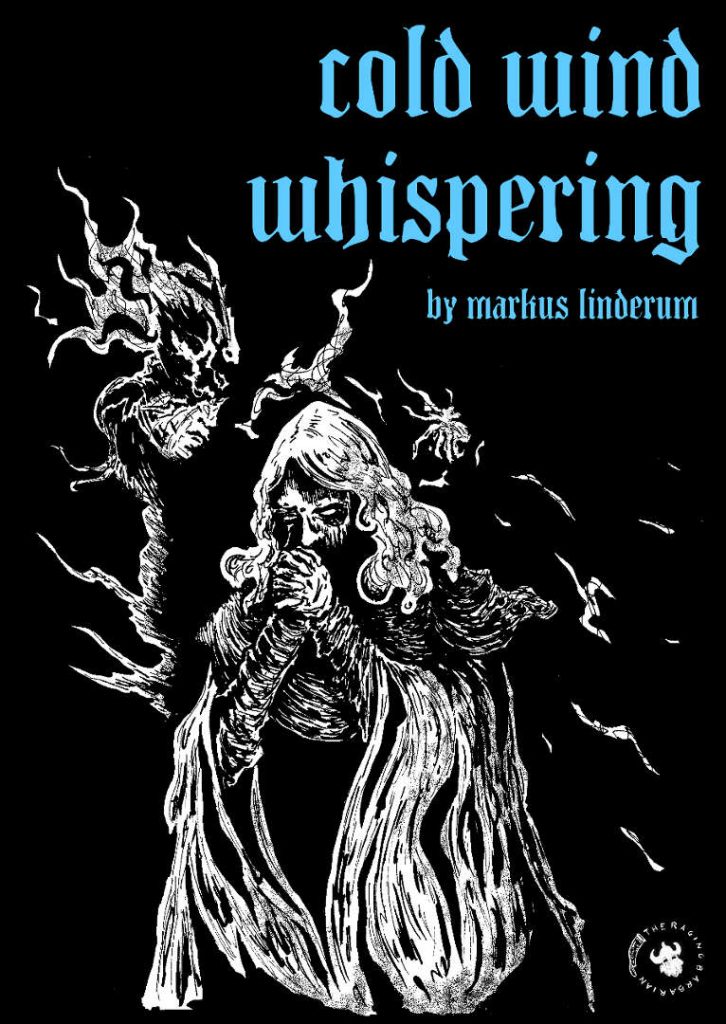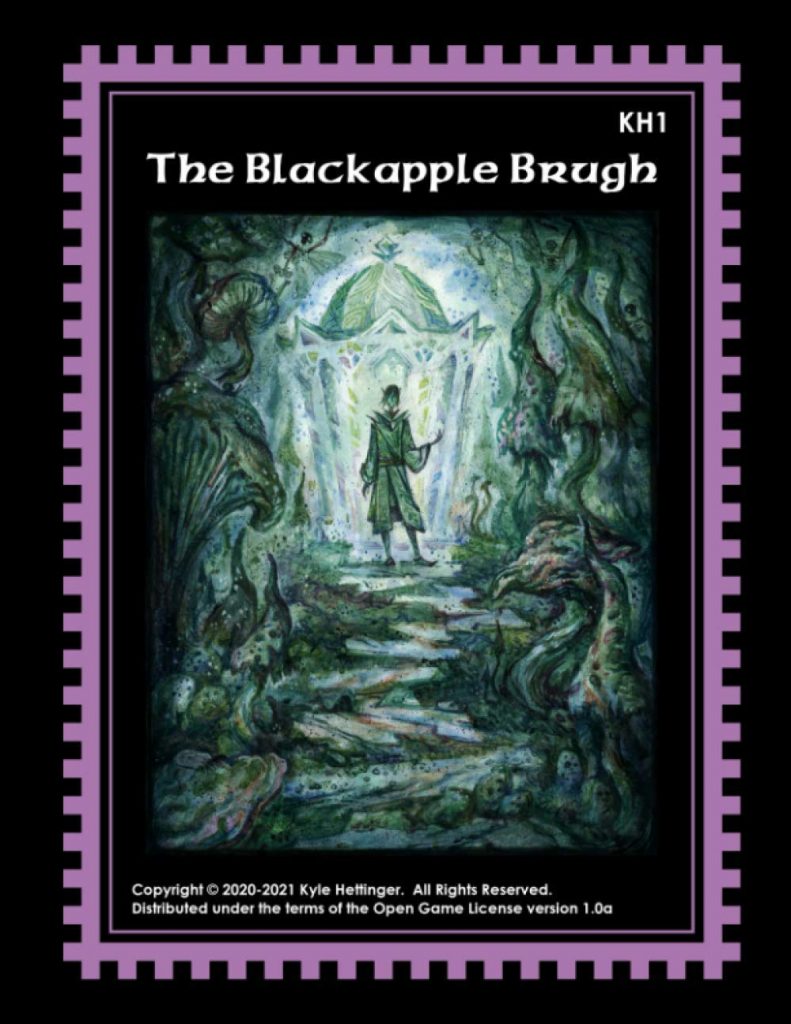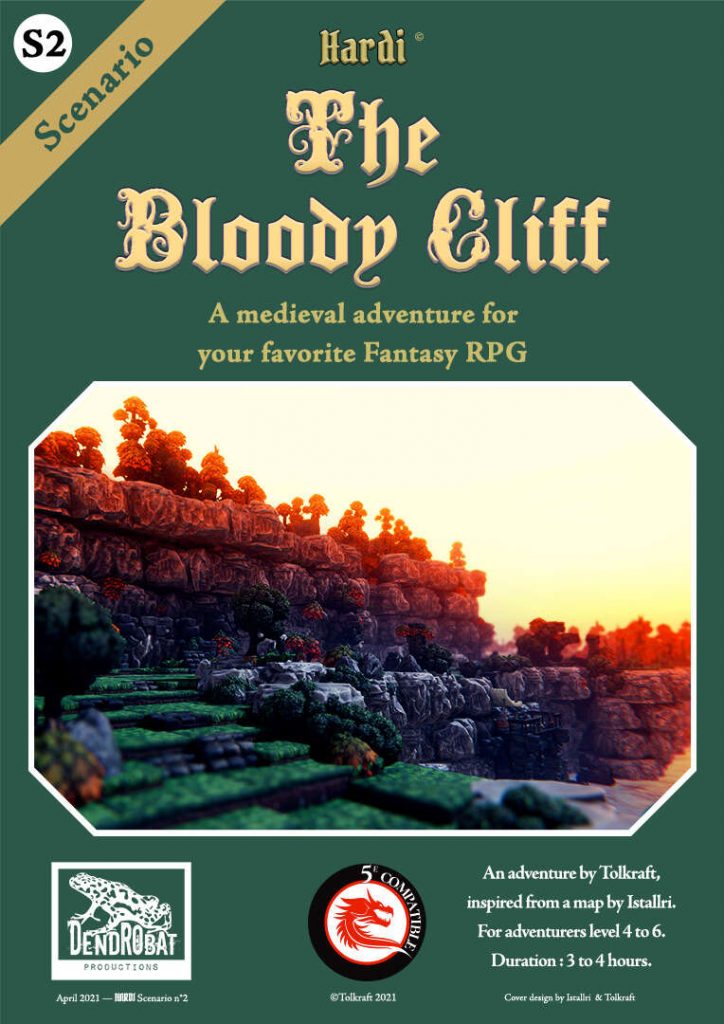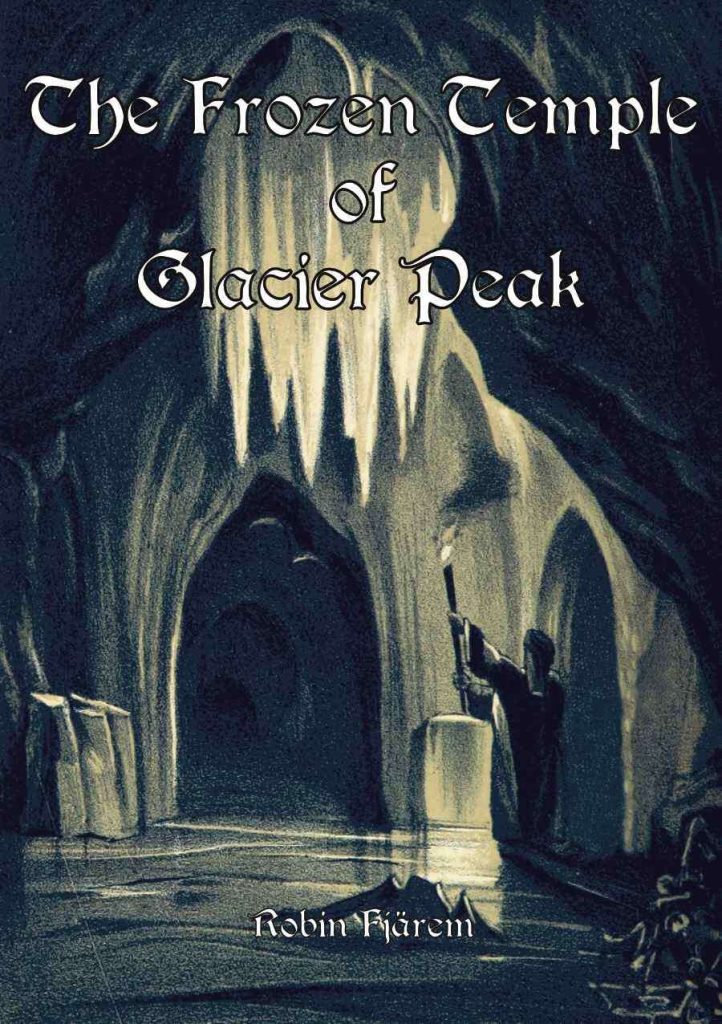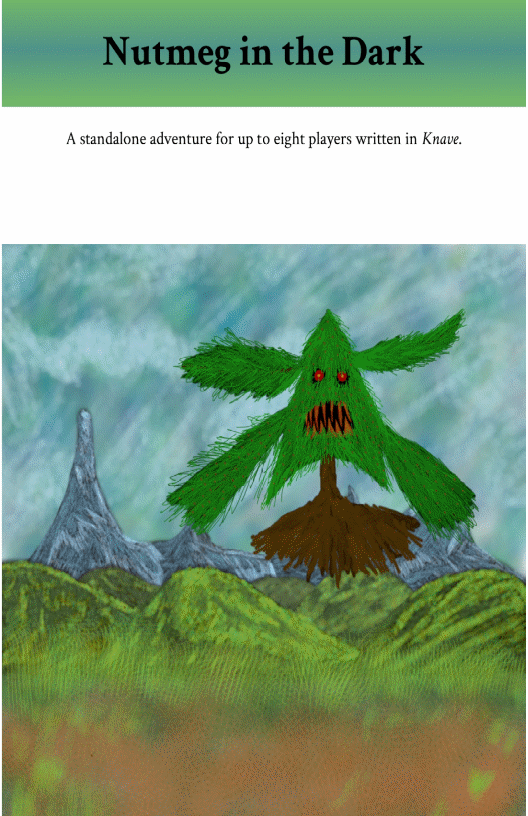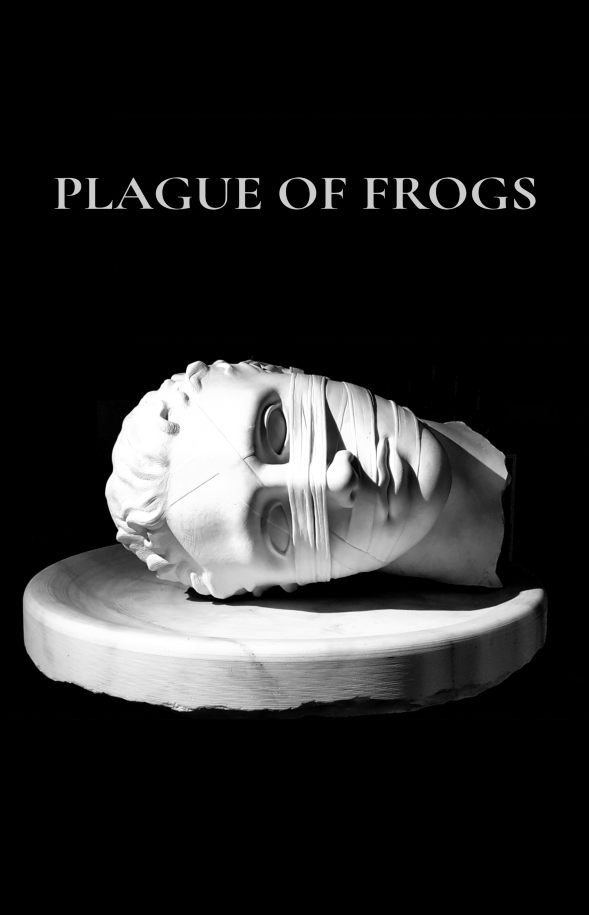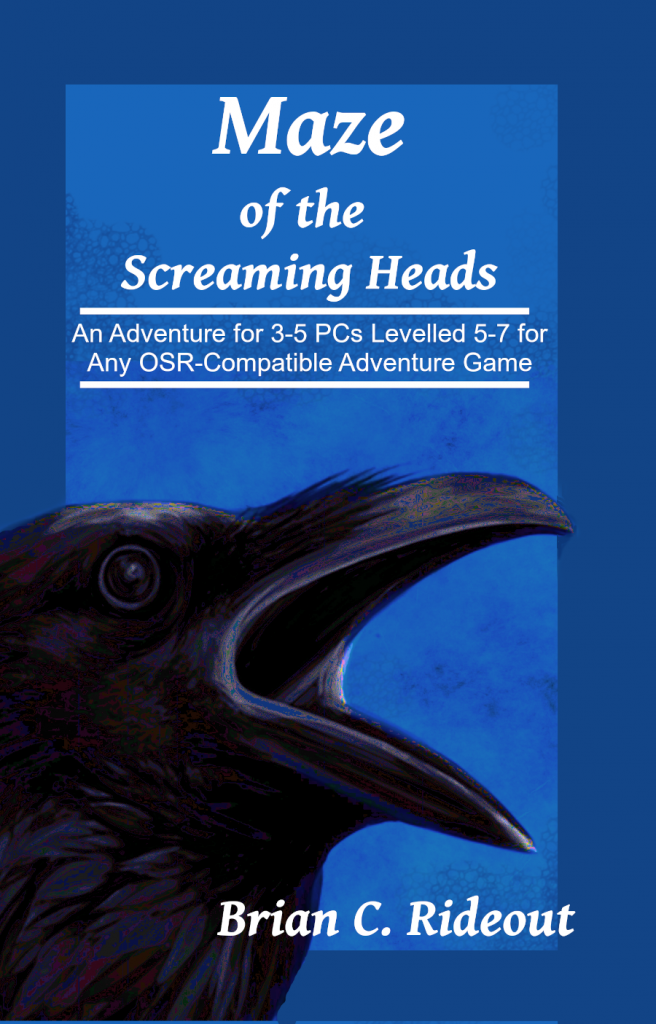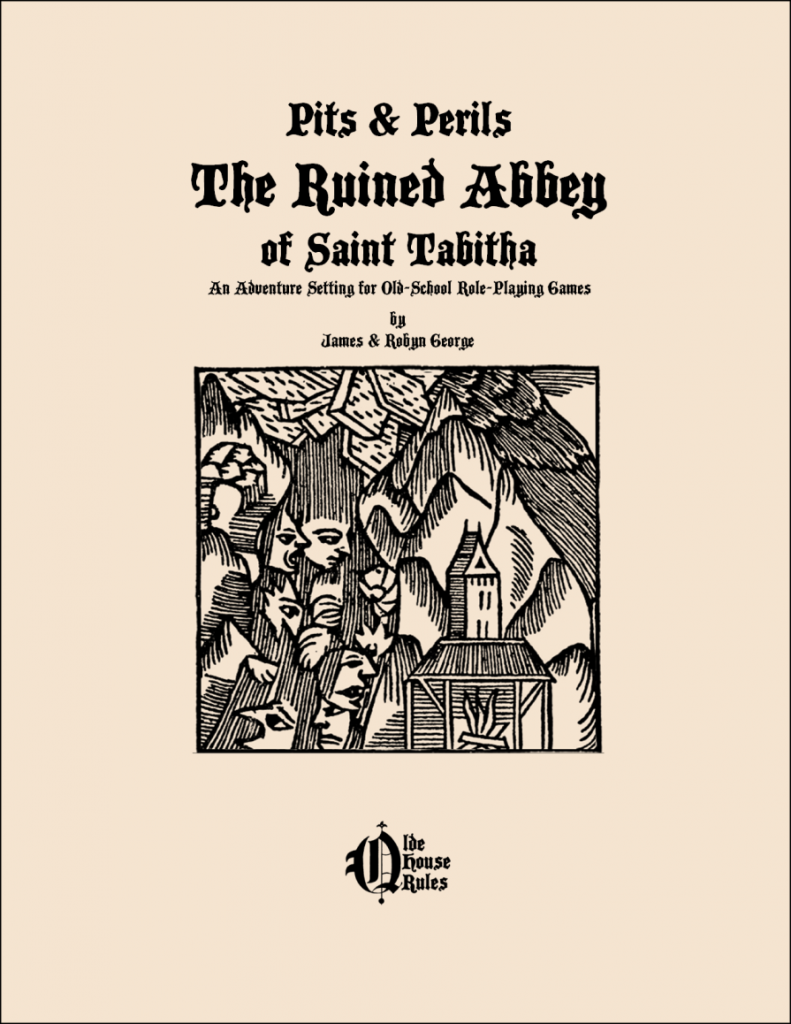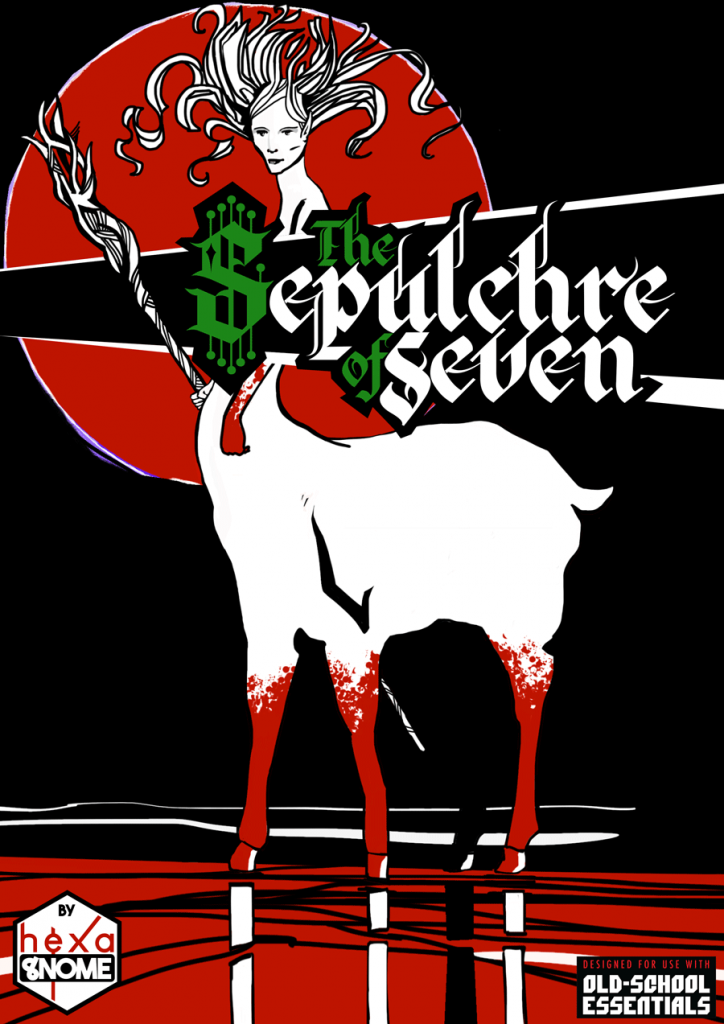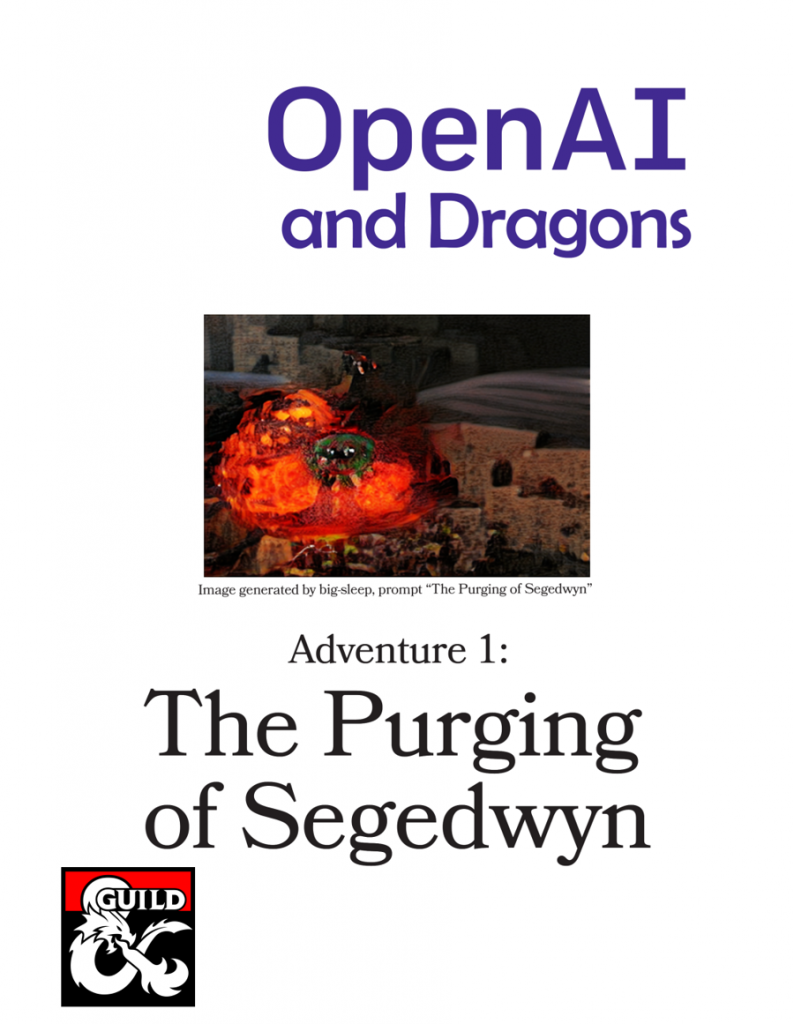
By OpenAI Davinci Model Self Published 5e Levels 1-3
Explore a story of “fractured societies and forbidden magic”, and discover the (quite unbalanced) magical power of the Sword of Segedwyn (or was it a staff?)
This thirteen page adventure was written by an AI program, with just a little of guidance from a human feeding it some keywords to expand upon. 1) Tt is terrible. 2) It is interesting to see what the AI app can turn out. 3) It is NOT the worst thing I’ve ever reviewed, which is either sad commentary on the state of RPG adventure affairs or on me and my ability to pick/review adventures.
I know, I said I was taking a break from 5e reviews for awhile. But, this one is different! I know, I know, that’s what I always say, and tell myself. Anyway …I tell people various things when they ask about my degree. Some combination of philosophy and/or computer science, depending on the context. Which, while true, is not actually my degree. It’s actually in Cognitive Science, which was the fancy pants way of saying “Artificial Intelligence” back in the early nineties. Happily, my only actual AI class, I received a D in, which, makes sense, since I was only person at the particle accelerator/cyclotron facility that I worked at who had received a D in physics. So, anyway, this AI shit is now delivering and I have a passing interest in it. So you get to fucking suffer.
If you’ve followed the news at all you should be tangentially aware that the computers are now generating text that human brains can perceive as being a story. There are models that create fiction, write news stories, and other basic tasks, all with varying degrees of success … varying degrees that are rapidly improving. The more focused your model is, the more specialized, the greater the degree of success the model has in generating something that the pattern recognition systems that live in our brain will string together in to something we tell ourselves we recognize. They are good enough now, it looks like, that specialized programs, like for news stories, can take basic facts and string them together in to something to be published. We’re not talking Joyce here, but it’s enough. And thus we get to this.
What we’ve got, it appears, is an app that can create a text story. The human attached has fed it certain keywords in to guide it, just a bit, in to creating something like a module instead of a pure fiction story. This keyword guidance is, helpfully, bolded in the text of the document so you can see what the guidance was, and, there are screenshots at the end showing the keywords and raw text generated. Basically, the human is using the keywords/leading phrases to guide the app to create some text about it. Everything is up front and the vast, vast majority of the text is being generated by the AI app. It’s just poked in the ribs a few times to get it to expand some of the ideas/details it has previously generated so it better fits the model of an adventure.
It’s not doing too shabby.
The basic plot is that the king and his henchmen are evil. The resistance wants you to take them down, and gives you a magic sword to do so. There’s a couple of double-crosses, including the sword, and a staff eventually fills in the role the sword was supposed to take as The Thing in the prophecy that actually kills the king.
This is a 5e adventure, so, you know, plot. Which actually works out ok since thats what the AI app does in creating fiction. The generator has the ability to reference callbacks, things that have happened or were introduced earlier in the story. There are a couple of interesting things going on.
I’m sure that I’m reading too much in to this, but, it looks like there may be some kind of hook or training in fiction? Or, maybe, I want that to be the case. In particular, the app has used the number 3. There are THREE henchmen of the king to be killed. Three is, of course, a magic item and tends to have great cultural significance. I don’t see any prompting by the human to use the number three, so, it’s choice in this is quite interesting. Further, the AI has generated the concept that the three henchmen, who must all be defeated in order to defeat the evil king, are actually one person with three bodies. The bolding is not the easiest to make out, but the human prompting seems minimal. It looks like this could be human prompting “This is because the henchmen “ and then the app has filled in “are actually one person with three bodies.” There we go! Given the use of the number “three” I guess I shouldn’t be surprised. And it seems to be able to understand a surprise/double-cross, so, turning the three in to one is not a huge stretch. You can see a connection between this concept and the one with the magic sword/staff. You’re given the magic sword, to kill the king and his henchmen. You need it to kill them. But, it’s a trap! It actually harms YOU. You need the STAFF in the throne room to actually kill them. There’s another example where a rebel is actually bad guy and double-crosses you. Once you see the pattern “it knows how to turn a concept back on itself to generate surprise” then you start to see its use/overuse. I suspect that everything it generates has a lot of this in it. 🙂
Some of the prompting works better than other examples. An attempt to generate a magic amulet “The amulet allows “ generates “the user to see through the eyes of the animals.” Not bad. But in other cases he prompting works less well. There’s an attempt to insert “Matt the Rat King” in to the story and the generator essentially refuses to have anything to do with him except when prompted.
One of the conceits of this blog is that so many adventures fail because the designer cannot recognize that adventure writing is technical writing. This is the “formatting” part of the three part Brycian adventure model. The adventure fails utterly there, being just arranged in simple paragraph form with a few chapter heads that seems to be mostly meaningless. Interactivity is mostly limited to combats and some sneaking around. Not great, but, at least as good as most dreck adventures. Evocative writing is not particularly strong. The writing seems aimed at a lower grade level. This is most notable in a section in which the human prompted “The mansion is described as follows:” This gets us the following text from the generator “This stone mansion, built withing the last decade, features high walls small windows, and iron-bound doors. A small door with a peephole stands opposite the main gate. The mansion is surrounded by a grove of dead trees. The grove is protected by a 10’ high, 10’ deep ditch filled with a yellowing noxious smell.”
It’s done a few interesting things here which stand out from the rest of the generated text. It’s generation of a grove of trees SURROUNDED by the ditch is quite interesting. The pairing of the two ideas. They have no relation to anything else and never appear again, and, being adjacent to the castle, are no obstacle. But, the app has paired the two items which is interesting. It also represents the best example of descriptive text in the adventure. A GROVE of DEAD trees. And a yellow noxious smell. We can quibble about smells being yellow. The philistine says NO, but the poet says YES, so, some awkwardness in the word usage can be a good thing. Mostly, though, the word choices are not too great. The king is a BAD man, and so on. There may be some usefulness in a model that avoids high usage words for adjectives and adverbs.
It’s generated a plot, but its ability to form that plot in to coherent sections, akin to adventure beats, it currently lacking. Solving that issue, as well as its general tendency to pad by repetition, would elevate it greatly, maybe to the point of being a real adventure. Work on word choice would push things even further.
You can see how close this thing is to actually being useful, and this is in an almost fully automated manner. With some more guidance this could easily generate ideas for a human designer to “fix.” I look forward to the day in which DriveThru is flooded by these things, finally forcing a solution to the curation problem.
This is Pay What You Want at DriveThru with a suggested price of $1.50. I would check it out, as a curiosity at least. And $1.50 to support dudes research/efforts? That’s trivial.
dmsguild.com/product/372065/OpenAI-Series-1-The-Purging-of-Segedwyn?1892600

